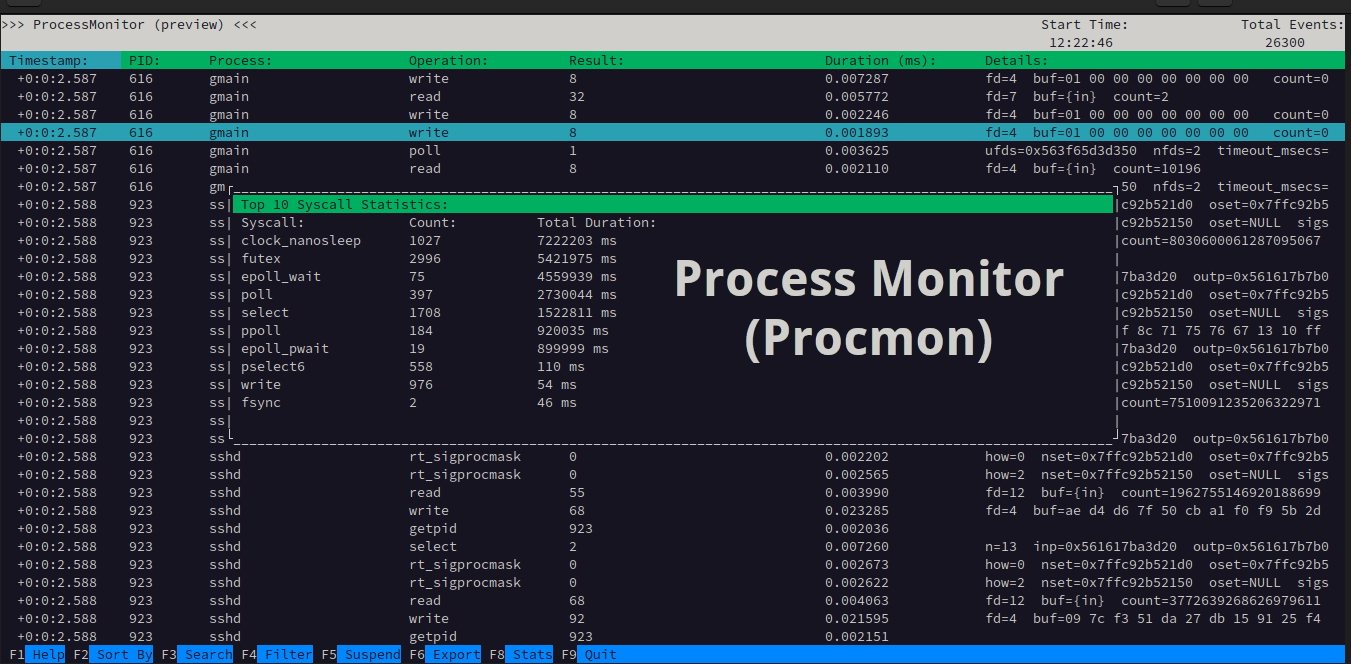

- Process monitor linux how to#
- Process monitor linux install#
- Process monitor linux archive#
- Process monitor linux zip#
Install VmStat in Linuxīy default vmstat command is not available under Linux systems you need to install a package called sysstat (a powerful monitoring tool) that includes a vmstat program. Linux VmStat command is used to display statistics of virtual memory, kernel threads, disks, system processes, I/O blocks, interrupts, CPU activity, and much more. # topįor more examples of Top command read: 12 TOP Command Examples in Linux 2. The top command is much useful for system administrators to monitor and take corrective action when required. It also shows high memory and cpu utilization of running processes. It displays CPU usage, Memory usage, Swap Memory, Cache Size, Buffer Size, Process PID, User, Commands, and much more. The top command is used to display all the running and active real-time processes in an ordered list and updates it regularly. Tip: The Table's OID is 1.3.6.1.2.Linux Top command is a performance monitoring program that is used frequently by many system administrators to monitor Linux performance and it is available under many Linux/Unix-like operating systems. Note: This is also possible using our Custom Table Sensor, and it will allow for better naming of sensors and improved Auto-Discovery support. This has been tested on Ubuntu, but should also work for every other distribution using NET-SNMP.
Process monitor linux how to#
If you want to add another process just follow the steps above, the new process will be in category "Processes: 2", and so on.īasically this is how to monitor your processes on a Linux machine. Go to sensor's Settings tab and rename the sensor to match your process.Select the value you want to monitor (Example: "Processes Count" shows how often the process is running) and click on Continue The process, from the step above, will be shown somehow like this:.Add a new SNMP Library sensor, then choose Basic Linux Library.You can also deploy the sensor's manually if you don't want to use the auto-discovery. You can adjust the channel limits or lookups to your needs later.The sensors are deployed after a couple of seconds.

Note: Using the auto-discovery with a dedicated device template is convenient here because it automates the creation of the custom sensors in an organized fashion.
Process monitor linux archive#
Process monitor linux zip#
Download the required zip archive here.The usage of the device templates makes the deployment of sensors easier, especially if there are several devices or processes that you would like to monitor. You can however define additional limits for the "Process Count" channel. It will use the status for alerting by default. This device template will poll the following: Restart your SNMP service to make the changes take effect.Īutomatic Sensor creation with Device Template.



 0 kommentar(er)
0 kommentar(er)
